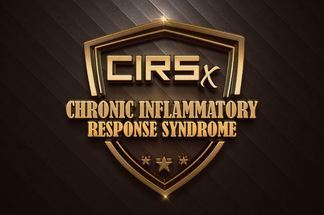As I See It - Part 2
PART 2 MASTER DIAGNOSTICIANS
Please see part 1 comments on Master Diagnosticians
In the quest to become a Master Diagnostician, can one ever be sure that a stated opinion is less than balanced? Bias, not the kind that comes from sewing on a fold, sure isn’t confined to an institutional straightjacket that controls any new thought that might contradict what the department heads and the Board of Trustees tell a hospitalist what she is supposed to say.
We know the figurative old doc, like the proprietary physician of the Pre-Flexner era, is a prisoner of the bias created by his esteemed position as master of all he sees and says.
The bias of the futuristic doc gets a rip-roaring head start when agencies and national payment groups participate in development of treatment guidelines and quality measures designed to reduce expenditures. If we want “quality care,” do we start with diagnosticians who disdain ‘platitudes’ or do we want to trust our health to real people with integrity? Can anyone besides me hear Big Government telling us, “Don’t dig for truth, just do what you are told” when the treatment guidelines for a given condition that must be followed to be paid by insurance plans are written by an unknown committee from an unknown agency that are based on recommendations from unknown third parties with unknown biases?
Bias? It’s coming from all sides of the mold issue these days, it seems. I am stunned to see some “mold papers” coming out of what I call the environmental medicine wing that don’t show: (i) thoroughness of references; or (ii) careful discussion of what makes their ways better than what has been used successfully for fifteen years; or (iii) critical review of the results of their interventions taken; or (iv) rigorous methods; or (v) dispassionate discussion of what the results actually show or don’t. Compare that series of incredible omissions to what we quickly say about the ACOEM reports of 2002 and 2011 (they are the same) when the authors, each with zero experience managing mold cases, fail to include hundreds of references that would show the ACOEM/AAAAI cabal’s stated editorial opinion was totally wrong. They present no human data; ignore immunological problems (the AAAAI opinion was cited for such failure by the US GAO in 2008); confabulate extrapolations from animals in massive, acute dosing situations to humans in low level, chronic exposure and far more ( ACOEM ploys and lies; link to Policyholders of America Research Committe Report). We jump on their obvious bias, cutting them to the quick on their lack of rigor, lack of thoroughness and the deliberate absence of transparency on well-defined clinical issues.
Basically, we know that ACOEM and the (now-retired) AAAAI opinions of 2006 were pure deception, a series of ploys designed to dupe judges into ruling that moldy buildings didn’t make people ill. And now the new wave of mold writers is doing the exact same thing. Appalled? You bet. Surprised? No.
But the same criticism applies to a “pro-mold” paper that uses desultory methods and intentional deletion of conflicting ideas, possibly to try to make a name for their work. What they are doing to the history of human “mold research” is similar to a genomics writer ignoring Watson and Crick; or Francis Collins, for that matter. Much of what I see from the new mold docs could not pass any modicum of careful peer review. While all in the mold community are certain that the slop fed to courts from the defense bar and their consultants is disgraceful, the same moral outrage does not attach to the pro-mold people who publish equally unacceptable papers under the guise of the Appearance of Good Science. But it should.
As far as encyclopedic knowledge, we all know that what is written in a text is at least five years old. The quote from Tolstoy I have mounted on a wall in each of my exam rooms, speaks to the older physician with his encyclopedic knowledge of old ideas, the hospitalist given institutional guidelines, and the futurist who doesn’t have something new in his data base.
“Most men can seldom accept even the simplest and most obvious truth if it would oblige them to admit the falsity of conclusions which they have delighted in explaining to colleagues, have proudly taught to others, and have woven thread by thread into the fabric of their lives.”
My greatest concern comes from the idea that a pre-printed checklist will suffice for creative medical thought. Just look at the creep of ACOEM into occupational medicine providing payment guidelines! Checklists for occupational back pain; checklists for occupational asthma; checklists that must be obeyed as in a North Korean military parade or else. Don’t forget the checklist for who writes the check for the medical services and for how much too. Now that Quality is defined by adherence to checklists I am waving good bye to true Quality of care.
I am struck with Dr. Detsky’s selection of thoroughness and Oslerian listening as platitudes. Surely compassion isn’t a platitude. A medical history provides over 90% of the basis for a differential diagnosis and such a differential is the basis for accuracy in diagnosis. See whose history is more thorough (oops, that’s a platitude), the doc who established rapport with a patient by listening (oops, another platitude) or the guy with his big computer screen sitting between him and the patients eyes on him at the bedside?
A ROUTINE CASE FOR DR. DETSKY’S APPROACH TO DIAGNOSIS:
THIS CASE IS LIKE THOSE CASES I WORK ON EVERY DAY
Let’s see how a patient exposed to visible mold in a basement office space at work several years ago makes out with the diagnostic system proposed by Dr. Detsky. The patient, we will call him Gym Dunker, is 6’ 9’’ tall and weighs 235 pounds. Despite his height, he was too scrawny to survive in the paint for a college basketball team, so he turned to triathlons instead, doing very well in national competition. He is now a practicing attorney. It was only after his exposure to the moldy basement workplace that he became ill but now he is chronically ill, with cognitive problems, unexplained cough and chest pain in addition to chronic fatigue and delayed recovery from normal activity. He can’t exercise much because of his joint stiffness and can only walk up four steps before he becomes short of breath. After discussion he has a total of 21 symptoms (of my possible 37). A medical history is not a checklist. He was astounded when I asked him about clawing (he has to stand on his toes to straighten them) and static shocks, as none of his prior 15 physicians had asked about his incredibly common though unusual symptoms. His VCS (done on line on www.survivingmold.com and in his new doctor’s office) was positive, showing the typical deficit in functional vision. As to environmental clues, his current ERMI and HERTSMI-2 are normal in his office and current home.
This case is starting to look like a chronic inflammatory response syndrome (CIRS). Unknown to the three docs from Dr. Detsky who see this man and conclude he has anxiety problems, “my” diagnosing docs find he has a unexplained but typical deficit in visual contrast sensitivity (VCS); restrictive lung disease due to high TGF beta-1; elevated MMP9; low VIP; low levels of CD4+CD25++CD127-/lo T reg cells; caudate atrophy on his NeuroQuant of his brain and low VO2 max on his pulmonary stress test. His pulmonary artery pressure, normal at rest, rises nearly 30 mm of mercury in exercise. Dr. Detsky’s approach, as detailed below, would yield none of these findings.
My concern is that he is at high risk to have an aneurysm of his ascending thoracic aorta. A ruptured aneurysm (but, says the futurist, “Statistically, he is too young for an aneurysm.”) might mean a dead patient. Oops, he forgot about being thorough by not looking at TGF beta-1. Whose fault is the wrongful death going to be anyway, since the bad outcome was thoroughly preventable?
All of Gym’s physiological abnormalities are due to his exposure to the basement in his old office. He files for Worker’s Compensation benefits. Testimony follows.
His long time Family Practice physician hasn’t seen him in years but remembers him well. “Sounds like his anxiety is getting worse, I remember the night he was supposed to give the valedictorian address. He hyperventilated. I suspect that is all we are seeing here.”
The hospitalist decides that because the lung exam is clear that no pulmonary function testing or diffusion capacity needs to be done. VO2 max? That’s just for heart failure. Stress echo? No need, as that is only authorized to look for left ventricle problems.
The doc of the future looks to the electronic medical record (EHR, integrated with literature searches that are based on Bayesian analysis of probability of illness based on symptoms), only finding the undocumented history of hyperventilation, mild anxiety and normal physical exams for college and grad school. His checklist only finds two health symptoms. Since the exam in the EHR is clear there is no need for further testing. He cites an algorithm from ACOEM that says there is no need for a CT scan of the chest. Looking for acquired pulmonary hypertension is not in his computer. The futurist says no in person evaluation is needed.
If we let Mr. Dunker listen to physicians trained according to principles espoused by Dr. Detsky, nothing is done and his rapidly enlarging thoracic aneurysm ruptures when he coughs hard next year. Mr. Dunker cannot even say good bye to his wife and two young boys, each of whom has the same HLA DR as their Dad (11-3-52B). They both also go on to develop aneurysmal aortic dilation but the revised medical education system (I hope!) by then diagnoses their condition rapidly by finding the high TGF beta-1, made worse by their own mold exposure that was similar to what killed their father.
Consider the following interaction between a patient advocate (A) and the hospitalist (H) receiving post mortem feedback as per Dr. Detsky. The legal defense against the wrongful death suit will be that there is no breach in medical care, as the futurist correctly followed a checklist for non-exertional chest pain like Gym’s:
H: “Nope, if it isn’t on the checklist it doesn’t have any relevance to our practice parameters and we won’t authorize payment for it either. He had a history of hyperventilation.”
A: “Excuse me, Mr. Checklist, but you don’t include elevated TGF beta-1 on your approved list of labs for chest pain.”
H: “Of course not, who has ever heard of such a test anyway.”
A: “Would you look at PubMed and type in TGF beta? Great, do you see the 75,000 references? Even if you (old doc, anyone?) didn’t learn about an immune compound of great importance because of your political, institutional and positional bias, others didn’t agree with you. They read and they learned. They see incredible importance for a compound you feel you can ignore. OK, now look at aortic aneurysm formation and TGF beta-1. Can you still tell me the compound is not important?”
H: “Oh, I see. But so what?”
A: “The patient had an aneurysm, Dr. Checklist. It killed him because it was not discovered. But it isn’t something you bothered to include.”
And that, my readers, is a scene that happens every day. Sadly I fear that in the world of Dr. Detsky’s future practitioner, it will be even more common.
So how would I answer the “three basic questions from patients” in this case? Well, first I would define them better, for sure and add in the need for inclusion of existing science in establishing treatment modalities. What was wrong? A condition related to collagen abnormalities tied to cytokines that are exacerbated by exposure to multiple antigens that his HLA won’t let his body regulate. What was his treatment? Simple: removal from exposure, normalization of VCS with the cholestyramine protocols, correction of TGF beta-1; correction of joints and low VO2 max by lowering MMP9; and VIP to correct the TGF beta-1 defect, fix the acquired pulmonary hypertension and restore Purkinje fiber interconnections in his caudate, correcting the atrophy. Will he recover? Yes. Did his doctors listen to him? No. Were his doctors thorough? No way.Would a diagnosis of anxiety be validated? Only by his casket.
Here’s one non-Detsky scenario: The old doc would know the patient and his family. He would be an advocate for the patient and family, using his encyclopedic knowledge of what the past medical history has been; who the patient is as person; the environmental conditions at home and work; and what hasn’t worked to help the condition. The old doc adds to the differential diagnosis by removing the arrogance brought on by the hospitalist with her superior intellect, snickering that the “complicated patient” was a gomer or a crock. Everyone knew the brainy hospitalist had a photographic memory. She couldn’t remember, however, what she never bothered to find out. Her opinion: The patient probably just wanted some paid time off from a stressful job.
The doc gets the history of mold exposure, sends the patient for an insurance company-funded IME from one of the CIRS docs. The diagnosis is made and the patient is fixed by terrific thoracic surgeons like Paul Bolanowski MD (a mold literate surgeon!).
And face it: this kind of diagnostic garbage given to Mr. Dunker goes on everyday. Its advocates get prominent venues in JAMA, but for what end? To continue the inadequate evaluation made by docs lauded for being expert diagnosticians who miss what I see every day in patients with complex inflammatory illnesses.
The hospitalist meanwhile finally tells us the institutional conflicts of interest that prevented her from seeing the patient in support of the possible litigation for occupationally acquired multisystem illness. She did ask the patient to see the staff psychiatrist, then a rheumatologist, neurologist and pulmonologist. She could have ordered the inflammatory testing if needed according to her institutions’ specialists. Still, she didn’t have time to discuss the case with the old doc. Besides, he already has the report on his computer just like she can see on hers.
And how about a better non-Detsky scenario? The doc from the future arrives with his checklists and statistical probabilities. As there are no case/control studies he can find (didn’t look) that show that this case was unusual he suggested watchful waiting (he doesn’t use a Zip Loc bag to hold his sticky notes of unusual cases). Dissatisfied, the patient calls a doc certified in CIRS for another opinion. Based on his knowledge of the combination of proteomics and genomics (readers of this site already now that this information is here now but the rest of the future hasn’t caught up yet) a full mold lab evaluation is done despite no coverage from WC. Based on the elevated levels of particular microRNAs, the CIRS doc knows that an aneurysm is likely to be there and should respond to downregulation of TGF beta-1 and normalization of thymus derived T reg cell levels. He proceeds to treat with the TGF beta-1 lowering derivative of losartan and VIP, the aneurysm abates, fatigue clears, pulmonary hypertension, cognitive issues, brain volume abnormalities and joint symptoms all clear. Case is closed.
So does this case tell us anything about where Dr. Detsky went wrong? Bias is a sickening thing: it will destroy modern medicine when docs give up independent practice to follow agency guidelines and their inevitable checklists.
Going beyond bias, Dr. Detsky misunderstands that the process of diagnosis is vitally important. Yes, patients want to know what is wrong and yes, they want to feel better. But at what cost? And how can they really believe the doc with his computer and his approach based solely on an attitude and training from a big checklist hospital? Patients will accept just about any treatment if they have confidence in the doc telling them what to do to get better. Recovery has become almost expected in non-cancer illnesses. But given institutional care, and chain link diagnostic protocols, disillusionment soon follows if nothing comes from the diagnosis.
But if the doc doesn’t listen and doesn’t demonstrate thoroughness, leading to therapies for a misdiagnosis, then patient acceptance is unlikely. Then, when the psych doc from the emerald institution in the sky says the illness is emotional all confidence in physicians is lost.
As it appears to me, the big failure of Dr. Detsky’s article is that it gives no consideration to the training needed for physicians to care for those vast numbers of patients with CIRS who live a life of diminished accomplishments and expectations. Platitudes, indeed.
Does he even know this population exists? Doesn’t sound that way to me. But his opinion is in JAMA and mine is not.
In the mean time, remember (1) that data don’t lie when collected thoroughly; (2) checklists are far from infallible but proper listening is closer; (3) encyclopedic knowledge demands awareness of what is current and not just what was true 5 or 10 years ago; (4) use of statistics has no determinative role when there is only one patient; (5) assumptions about causation without a broad basis for a conclusion can kill every Tom, Gym and Mary; (6) failure to look for innate immune abnormalities is untenable in 2014.
So please weigh in on what makes a Master Diagnostician.
Featured Resources for Community
Shoemaker Protocol™ Quick Start:
The 3 initial steps to determine if mold is affecting you One of the most common questions we hear is, “how do I know if I have mold illness?” Rest assured, if you’re asking this question, you’ve come to the right place.
AirOasis The #1 CIRS Spring Cleaning Hack
Specialized air purifiers are revolutionizing deep cleaning, no matter the season. They’re a game changer for remediation purposes, too.
CIRS Spring Cleaning Checklist
Living with CIRS means cleaning and maintenance efforts must be ongoing and up to CIRS-safe standards. Spring is a perfect time to do a thorough examination and cleaning of the entire home and create a schedule for the year ahead.
CIRSX Annual Conference June 5-8, 2025 in Tempe, Arizona!
Early Bird Discount ends March 7!
NEW EPISODE! Dr. Shoemaker on Episode #211 of the BetterHealthGuy Podcast!
New Episode! Dr. Shoemaker joins Scott on the BetterHealthGuy.com podcast to talk about the use of GENIE testing in Chronic Inflammatory Response Syndrome.




